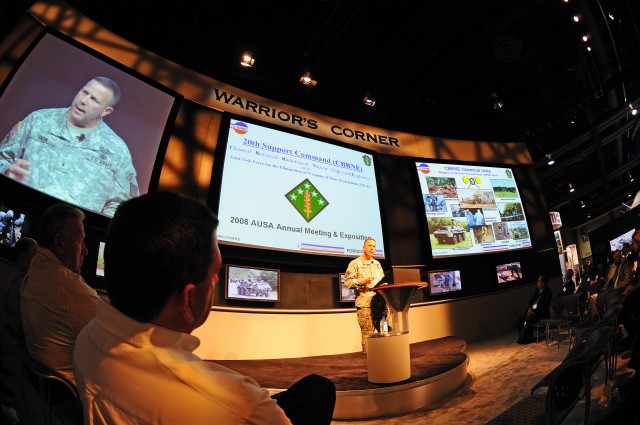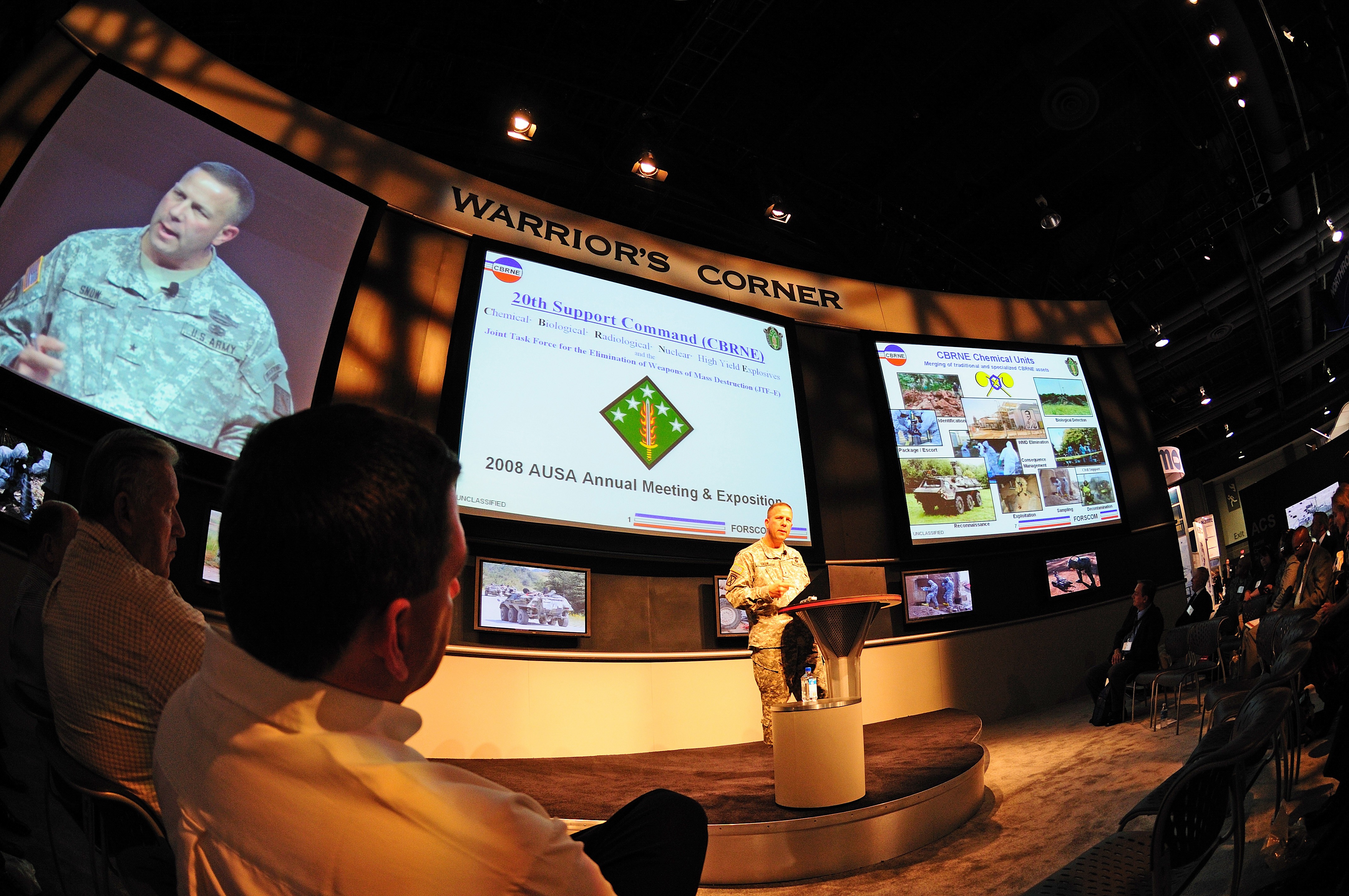
WASHINGTON (Army News Service, Oct. 21, 2008) - An Army unit originally formed to counter weapons of mass destruction in the United States now has more than 6,000 members and will continue to grow, said Brig. Gen. Jeffrey J. Snow.
Snow's 20th Support Command responds to chemical, biological, radiological, nuclear and high-yield explosive threats both in the homeland and overseas. He assumed command of the unique organization about three months ago.
"We started this organization because the Army recognized we had a gap in capability with regard to combating the most lethal threat facing the United States and that is some type of weapon of mass destruction," Snow told an audience at the Association of the U.S. Army annual meeting earlier this month.
Formed in 2004, the 20th out of Aberdeen Proving Ground, Md., began expanding its capabilities in 2006 to enable it to serve as a joint task force capable of rapid deployment to command and control WMD elimination and site-exploitation missions.
Today, there are more than 6,000 Soldiers and civilians currently spread among 23 states and subordinate units deployed to Iraq, Afghanistan, Kuwait, Saudi Arabia, Qatar and Kosovo. The goal when the command realizes transformation is to get down to 15 states, said Snow.
With a full-time focus on combating WMD, countering CBRNE threats and defeating all types of improvised explosive devices in tactical through strategic military operations, the 20th is also responsible for command and control of joint, Army and other government agencies' specialized WMD/CBRNE analytic, staff and operational forces.
The command can also use its reach-back communications connectivity from operators in the field to subject-matter experts at military headquarters, national-level labs, industry, academia or other state and federal CBRNE resources.
The command has its roots in the Soldier Biochemical Command which was an Army Materiel Command organization that evolved into the Guardian Brigade. The 20th reached its first milestone to become an Army expeditionary unit for combating WMD and CBRNE threats and for the defeat of all types of IEDs.
The command consists of the 71st Ordnance Group (EOD) out of Fort Carson, Colo., the 52nd Ordnance Group (EOD) at Fort Campbell, Ky., the 48th Chemical Brigade from Fort Hood, Texas and the CBRNE Analytical and Remediation Activity at Aberdeen Proving Ground, Md.
"With IEDs being a large part of the "E" in CBRNE, we are organizing in a way that will allow us to address all of the threats within the CBRNE and we're developing capability and technology along that line," said Snow.
Snow said the 20th is also in the process of re-stationing and modularizing its EOD forces and is putting those EOD forces on Army Forces Command installations. He also said EOD capability will grow to the point that an EOD company will be supporting each of the bigade combat teams, a battalion-level organization will support divisions, and then groups will have the potential to cover the corps level.
"We are in the process of growing those EOD companies from 23 to more than 44 Soldier companies," he said.
The 20th also provides EOD support to senior government leaders and to the State Department to protect visiting dignitaries. The command recently provided EOD support to both the Democratic and Republican conventions.
The CBRNE Analytical and Remediation Activity, or CARA ,provides analytical lab support, technical support and remediation in support of combating WMD objectives throughout the United States and in other countries at the request of the government.
The general cited a recent example of how one of the teams was deployed to Japan to unearth and render suspect rounds which turned out to be white phosphorus and not chemical.
"The team was able to explain to the government of Japan and give them advice on how to destroy it," Snow said. "We do that kind of thing in the U.S. all the time."

Social Sharing